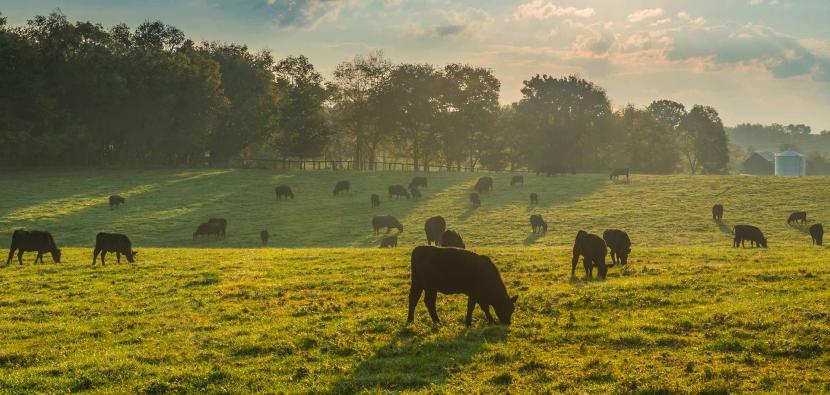
The end of Cross Compliance: What does this mean for Compliance Requirements on Farm?
Read our article on what the end of Cross Compliance means for compliance requirements on farm, including a table showing the alignment between the previous Good Agricultural and and Environmental Conditions (GAECs) and Statutory Management Requirements (SMRs) under cross compliance, with the different pieces of underlying legislation, regulation or order that contain these requirements and continue to apply in 2024.
The Agriculture Transition is now well underway as England moves from the European Union’s (EU) Common Agricultural Policy to Environmental Land Management schemes.
In England, Direct Payments are being phased out. The Rural Payments Agency (RPA) has replaced the Basic Payment Scheme (BPS) with delinked payments in 2024. This simplifies the payments as they are phased out. As the name suggests, delinked payment remove the link between payments and the land. Payments are being made between 2024 and 2027, but the payment amount will decrease each year as progressive reductions are applied. After 2027, these payments will stop completely.
The funds released are being redirected to a suite of new schemes including the Sustainable Farming Incentive, Countryside Stewardship and Landscape Recovery. Not all will be relevant to all farms, but it is important to keep abreast of what is available, and whether it makes sense on your farm, to ensure no opportunities are missed.
Delinking will also mean the end of the Cross Compliance regime. If you are a farmer or land manager and claimed rural payments between 2005 and 2023, you had to follow a set of rules called cross compliance, including standards of Good Agricultural and Environmental Condition (GAECs) and Statutory Management Requirements (SMRs). While cross compliance is ending, those who are farming will still have to comply with regulatory standards on the environment, animal and plant health, and animal welfare. These regulatory standards sit under domestic (UK and England) legislation and regulation, as well as some retained European legislation. Compliance will be monitored by the existing statutory bodies and regulated in a fair, proportionate and consistent way. This means, wherever possible, working with farmers to get it right and giving them opportunities to self-correct before taking formal action.
Table 1 below shows alignment between the previous Good Agricultural and Environmental Conditions (GAECs) and Statutory Management Requirements (SMRs) under cross compliance, with the different pieces of underlying legislation, regulation or order that contain these requirements and continue to apply in 2024.
You can read the Rules for Farmers and Land Managers webpages on GOV.UK for further detail on what you must do and specific compliance requirements when you keep livestock or manage land. These are grouped by farming activities rather than individual regulations so you can find the ones that apply to you.
In addition, the Farming Advisory Service already provides detail on some of the different requirements that continue to apply on farm, such as Nutrient Management and Farming Rules for Water.
If you have any further questions please contact the Farming Advisory Service
Table 1: Previous GAEC and SMR requirements that existed under cross compliance, and the different pieces of underlying legislation, regulation or order that contain these requirements
Previous GAEC or SMR | Underlying Legislation, Regulation or Order that contains specific requirements |
| GAEC 1: Establishment of buffer strips along watercourses |
|
| GAEC 2: Water Abstraction |
|
| GAEC 3: Groundwater |
|
| GAEC 4: Providing minimum soil cover |
|
| GAEC 5: Minimising soil erosion |
|
| GAEC 6: Maintaining the level of organic matter in soil |
|
| GAEC 7a: Boundaries |
|
| GAEC 7b: Public Rights of Way |
|
| GAEC 7c: Trees |
|
| GAEC 7d: Sites of Special Scientific Interest (SSSIs) |
|
| GAEC 7e Monuments |
|
| SMR1: Nitrate Vulnerable Zones (NVZs) |
|
| SMR 2: Wild Birds |
|
| SMR 3: Habitats and Species |
|
| SMR 4: Food and feed law | UK Legislation:
|
| SMR 5: Restrictions on the use of substances having hormonal or thyrostatic action and beta-agonists in farm animals |
|
| SMR 6: Pig identification and registration |
|
| SMR 7: Cattle identification and registration |
|
| SMR 8: Sheep and goat identification |
|
| SMR 9: Prevention and control of transmissible spongiform encephalopathies (TSEs) |
|
| SMR 10: Plant Protection Products (PPPs |
|
| SMR 11 Welfare of calves |
|
| SMR 12: Welfare of pigs |
|
| SMR 13: Welfare of animals |
|